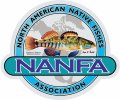Captive Care Notes: Spinedaces (Lepidomeda, Family Cyprinidae)
As with all desert fishes, Lepidomeda cannot be collected or kept in home aquaria. However, in order to determine the habitat requirements for the successful spawning of Little Colorado Spinedace (L. vittata) in the wild, researchers placed wild-caught specimens into a large earthen pond into which a long artificial stream, fed by water pumped from the pond, emptied. Gravel trays were placed along the pond and stream shorelines to simulate shallow-water gravel bars. Observations were made over the course of two years. Both years the fish began spawning in late May and early June when water temperatures warmed to 19-22C (66-72F). Small schools of fish separated from larger schools and swam upstream, where up to 15 males would hover around each gravid female over gravel substrate. The swarming mass of bodies cleared sediment and created a small indentation in the gravel. During spawning, males and females assumed a variety of positions: side by side, one atop the other, and twisting together. Sometimes the males shoved their snouts into the gravel as their tails emerged from the water. The spinedace ignored sand and coarser gravel substrates. Gravel trays placed in the pond portion of the setup were also ignored. Newly hatched larvae moved into the pond and remained in the shallow water near the shoreline, usually under aquatic plants and floating mats of algae. Based on a two-week delay in spawning in one of the two years due to a cooler spring, researchers believe that subtle disturbances in weather patterns may contribute to the highly variable year-to-year distribution and sporadic abundance of L. vittata in the wild.
Aquarium-kept specimens of L. vittata are said to opportunistic feeders that accept insects, leeches, snails, crayfish, earthworms, mealworms, filamentous algae, and commercial trout food. Although it is not known whether any of these foods would sustain the species for long periods of time, L. vittata have been maintained in aquaria for eight weeks on commercial fish pellets.
